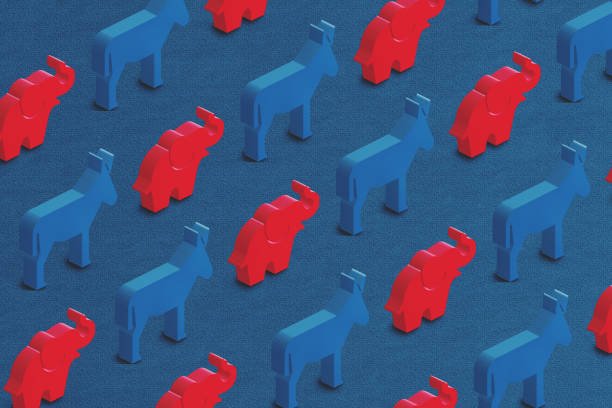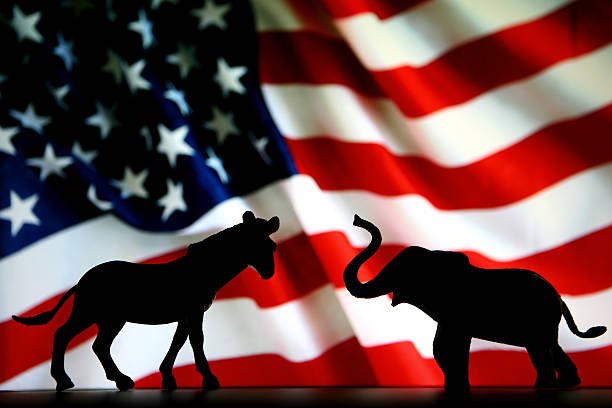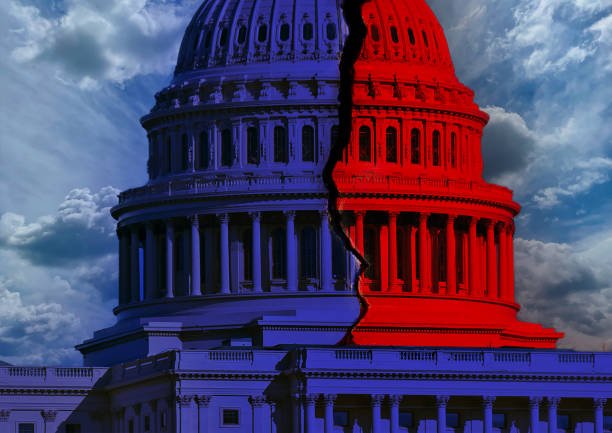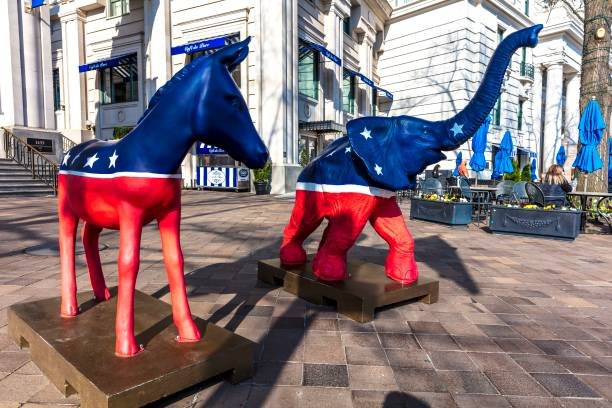The political landscape of the United States has always been shaped by two dominant parties: the Republicans and the Democrats. Over the years, these parties have evolved, adapting to societal changes, economic shifts, and public sentiment. However, with increasing political division, shifting demographics, and growing dissatisfaction among voters, the future of both parties remains uncertain. Will they continue to dominate, or are new political movements on the rise?
1. The Current State of the Republican and Democratic Parties
Republican Party: A Shift in Identity?
- The Republican Party has long been associated with conservative values, smaller government, and strong national defense.
- Under Donald Trump’s leadership, the party saw a shift toward populism, nationalism, and anti-establishment rhetoric.
- Internal conflicts between traditional conservatives and Trump-aligned politicians continue to shape the party’s direction.
- Key issues defining the party today: immigration, gun rights, tax policies, and social conservatism.

Democratic Party: Progressivism vs. Moderation
- The Democratic Party historically champions progressive policies such as civil rights, social welfare, and environmental regulations.
- A growing divide exists between moderate Democrats (like Joe Biden) and the progressive wing (led by figures like Bernie Sanders and Alexandria Ocasio-Cortez).
- Key policy focuses include healthcare reform, climate change action, student loan forgiveness, and wealth redistribution.
- The party struggles to maintain unity while appealing to younger, more progressive voters and older, centrist supporters.
2. Challenges Facing Both Parties
Voter Dissatisfaction and Political Polarization
- Studies show that a large percentage of Americans are unhappy with both major parties.
- The rise of political extremism and unwillingness to compromise has made bipartisan cooperation nearly impossible.
- Many voters feel their concerns are not being heard, leading to growing support for independent or third-party candidates.

Changing Demographics and Youth Engagement
- Younger generations, including Millennials and Gen Z, have different priorities than older voters.
- Issues like climate change, racial justice, and LGBTQ+ rights have gained more importance.
- Both parties struggle to appeal to younger voters while maintaining their traditional base.
The Influence of Social Media and Misinformation
- Social media plays a massive role in shaping political opinions and spreading information (or misinformation).
- Political campaigns now rely on digital strategies, but the spread of fake news and conspiracy theories has become a major concern.
- Both parties must adapt to the rapid evolution of political communication.
3. Possible Future Scenarios for Republicans and Democrats
Scenario 1: A New Third Party Emerges
- If dissatisfaction continues to grow, the U.S. could see the rise of a viable third-party movement.
- Some Americans advocate for a centrist party that avoids extreme liberal or conservative ideologies.
- Former political figures like Andrew Yang have already started pushing for alternatives, such as the Forward Party.
Scenario 2: One Party Becomes Dominant
- Historically, political parties rise and fall in influence. Could one party dominate national politics in the future?
- If Republicans fail to attract younger and minority voters, the Democratic Party could hold long-term power.
- If Democrats fail to maintain a strong coalition, Republicans could regain control by capitalizing on voter frustrations.
Scenario 3: Internal Party Transformations
- Both parties may be forced to undergo major transformations to stay relevant.
- The Republican Party might shift away from Trumpism and embrace a more traditional conservative stance.
- The Democratic Party may need to bridge the gap between progressives and moderates to maintain voter support.

4. The Impact of Key Issues on Future Elections
Economic Policies and Inflation
- Inflation, taxation, and job creation will remain key factors influencing voters’ decisions.
- Republicans advocate for lower taxes and reduced government spending, while Democrats focus on social programs and wealth redistribution.
- The future of both parties depends on how they handle economic crises.
Healthcare and Social Welfare
- Healthcare remains a top concern for American voters.
- Democrats support expanding healthcare coverage, while Republicans focus on reducing government involvement.
- The success of each party may depend on their ability to provide practical solutions to healthcare challenges.
Climate Change and Energy Policies
- Climate change has become a major political battleground.
- Democrats push for green energy initiatives and carbon emission reductions.
- Republicans prioritize economic growth and energy independence, often favoring fossil fuels.
- How each party handles climate policies will impact younger voters and future elections.

5. The Role of Technology and Media in Shaping Politics
The Power of Digital Campaigns
- Political campaigns now rely on data-driven strategies, social media outreach, and digital advertising.
- Both parties invest heavily in online engagement to connect with younger audiences.
The Spread of Misinformation and Fake News
- The rise of deepfake videos, AI-generated content, and misinformation challenges political integrity.
- Future elections may be influenced by how well parties combat fake news and maintain credibility.
Influence of Billionaires and Big Tech
- Wealthy individuals like Elon Musk, Jeff Bezos, and Mark Zuckerberg hold significant political influence.
- The debate over tech regulations and social media censorship will continue to shape party policies.
Conclusion: What Lies Ahead?
The future of the Republican and Democratic parties is uncertain, with shifting voter priorities, internal conflicts, and external challenges reshaping the political landscape. Whether through party transformations, the rise of a third party, or continued dominance by the two-party system, the next decade will be crucial in determining the direction of U.S. politics.
Voters, politicians, and policymakers alike must stay informed, engaged, and ready to adapt to the ever-changing political climate. The question remains: Will these parties evolve to meet the demands of a changing America, or will new political forces rise to challenge them?
The Role of Social Media in Modern Political Campaigns: How It’s Changing Elections Forever






